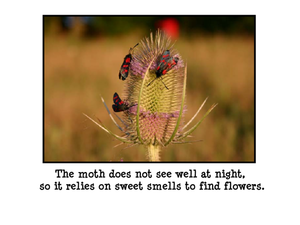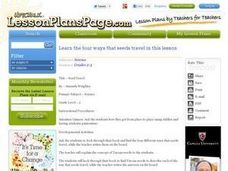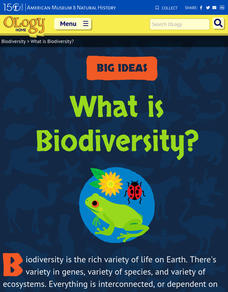Curated OER
Basic Needs of Plants
Second graders conduct a plant experiment. In this basic needs of plants activity, 2nd graders observe plants for two weeks. Students record data from their plants in journals.
Curated OER
What Plants Need in Order to Survive and Grow: Soil
Young scholars conduct an experiment to evaluate whether plants need soil to survive and grow. They plant two seeds, one with soil and one without, make predictions, and record and analyze the seed germination results on a worksheet.
Curated OER
Parts of the Seed
In this biology worksheet, students read about the parts of plant seeds and look at a seed diagram. They read about the roots, endosperm, embryo, and the process of germination. They answer 8 online multiple choice questions based on the...
Curated OER
Dry-Land Kalo-Growing New Plants from Stems
Students explore Hawaiian plants. In this Hawaii culture and botany lesson, students plant the haha(stem) of a taro plant. Students listen to Hawaiian myths about the taro plant and chorally speak a Hawaiian chant of protection. Students...
Curated OER
Plants And Pollination
Students describe sexual reproduction in plants, including the process of pollination, how insects assist in pollination, and how pollination differs from fertilization. They also explore the importance of honey bees to Arizona agriculture.
Curated OER
First Nations Plants and their Uses
Students identify the uses of plants by researching Native Americans. In this First Nations culture lesson plan, students identify the First Nations coastal people of British Columbia and their use of plants such as seaweed, bark and...
Curated OER
Smarty Plants
Students examine plants and pollinators. In this plant biology lesson, students read The Power of Pollinators and identify the parts of the plant and the pollinators. Students design their own imaginary plants.
Curated OER
Seed Travel
Students explore the four different ways that seeds travel. They separate students into different groups and they act out how seeds travel. The groups act out their different scenarios in front of the class.
Curated OER
Examining Seeds
Middle schoolers explore botany by conducting an investigation in class. In this seeds lesson, students utilize lima bean seeds and magnifying glasses to examine the different parts of a seed after it has been dissected. Middle schoolers...
Curated OER
Seed Germination
Students explore plants and the scientific method. In this plant growth lesson, students follow the steps in the scientific method to perform a seed germination experiment as a whole class. Students work in a group to create their own...
Curated OER
A Seed for All Needs
Students identify uses for plants. For this agricultural lesson, students read the book Spring Gardening and distinguish between food plants and flowers. Students plant flower in cups as a follow-up activity.
Curated OER
Why Plants Are Important to Us
First graders explore plant life. In this plant lesson, 1st graders examine various plant life and categorize them. Students graph their data and make journal entries regarding their work.
Curated OER
A Seed Dispersal Investigation
Students investigate the function and purpose of seed dispersal. In this garden lesson plan, students examine the importance of wind in the plant cycle. Students construct a flying seed model from an attached design and discuss if it can...
Curated OER
Structure and Function of Seeds
Students study the functions of seeds. In this biology lesson plan, students observe the structure of a seed as they show the function of the cotyledons in providing nourishment to the plant during the early times after germination.
Curated OER
Plants, Ecology, Seed Planting
First graders use senses to examine objective or events, then gather and interpret data with instruments. They design invention to support or refute hypothesis, then generate, record, and organize data. They improve environmental...
Curated OER
Creating a Pollinator Garden
Students build a pollination garden. In this pollination lesson, students read directions and build a pollinator garden that will produce flowering plants for pollinator organisms to use in pollination of other plants.
Curated OER
How to Grow a Sunflower Plant
Students explore botany by conducting a sunflower growth experiment. In this plant life lesson, students identify the anatomy of a sunflower plant and the essential nutrients it requires to grow. Students utilize compost, soil, garden...
K5 Learning
The Life Cycle
Studying plant, animal, or insect life cycles? Pair a science unit with a reading comprehension worksheet on life cycles. The passage touches briefly on butterfly, plant, frog, and dog life cycles before prompting readers to answer six...
K12 Reader
What’s Eating You?
Introduce your class to producers, consumers, and pollinators with a reading passage. Class members read the text and respond to five related questions.
K5 Learning
The Story of a Wise Woman
The Story of a Wise Woman tells the tale of South Carolina's, Eliza Lucas Pinckney and how she persevered to plant and harvest indigo. With this short story and questions activity, your early readers test their comprehension with...
Rain Bird Corporation
Rain Forest Teaching Curriculum
Take young naturalists on an exploration of the world's tropical rainforests with this extensive collection of lessons and activities. Whether its creating leaf and flower prints or investigating the absorption spectrum of...
Cornell University
Sun or Water? or Both?
Over the course of 10 days, young scientists observe their cups of seed and soil—one that gets sun and water and one that gets no sun and only water. Then they reflect on the results of the experiment to determine if their hypothesis was...
American Museum of Natural History
What is Biodiversity?
Not all dogs are the same just like not all finches are the same. An interactive online lesson helps individuals learn about the causes and limitations to biodiversity. The clickable sections describe the basics of the genetics of...
Curated OER
The Dirt on Plants
Students draw and label the four parts of a plant. They describe changes that are part of the common life cycle. Students follow various one and two step directions. They are asked to discuss that they can recall about plants.























